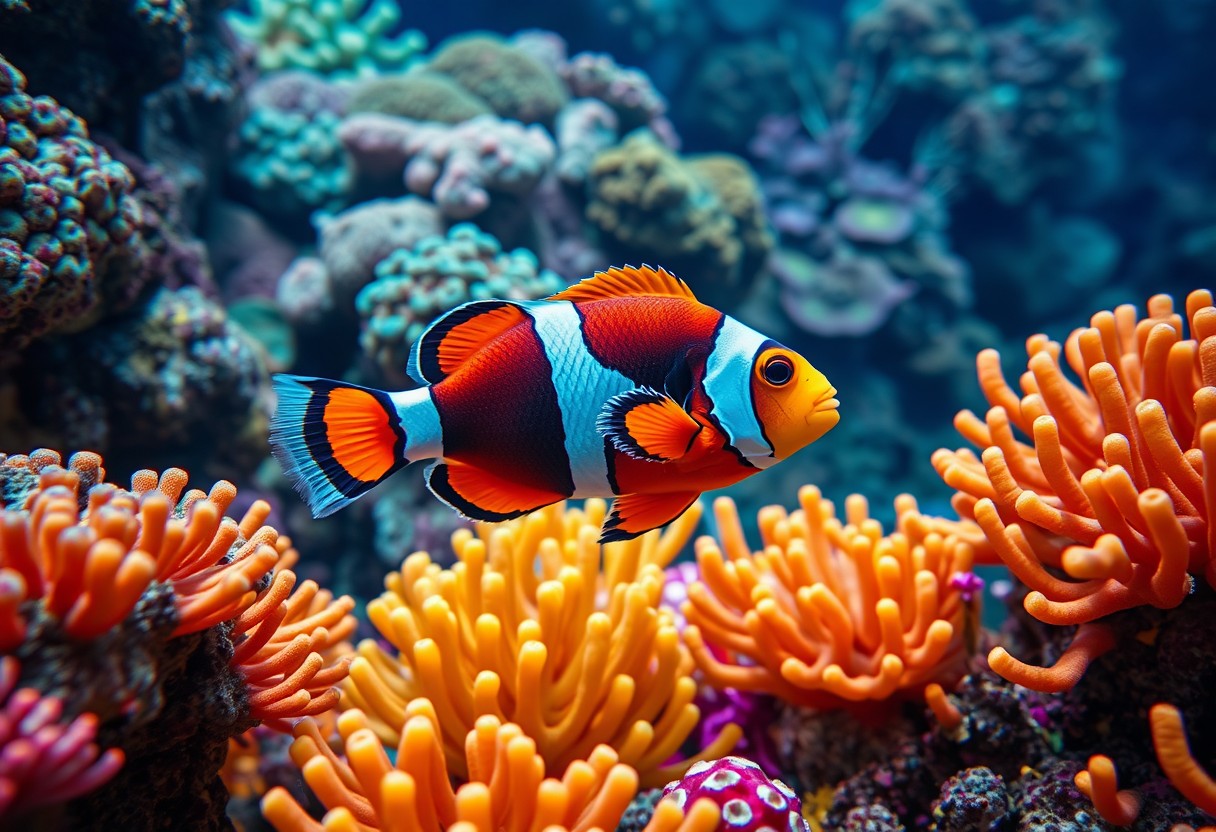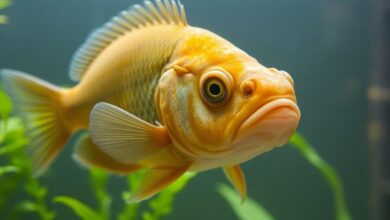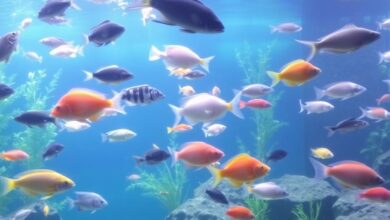
Many aquatic enthusiasts are captivated by the Gladiator Clownfish, a species known for its striking colors and unique behaviors. In this post, you will discover seven fun facts that highlight not only their vibrant appearance but also their fascinating interactions within reef ecosystems. You’ll learn about their aggressive tendencies and remarkable adaptations that make them stand out among their peers. Dive into the world of the Gladiator Clownfish and enhance your understanding of this remarkable marine resident.
Key Takeaways:
- Vibrant Colors: The Gladiator Clownfish is known for its bright orange and black coloration, making it a striking addition to coral reefs.
- Symbiotic Relationships: This species forms a unique partnership with sea anemones, providing protection for both while benefiting from each other’s presence.
- Social Structure: Gladiator Clownfish have a fascinating social hierarchy, where a dominant female leads the group, followed by a male and subordinate males.
Natural Habitat
The Gladiator Clownfish thrives in tropical marine environments, predominantly within vibrant ecosystems where they establish symbiotic relationships with anemones. These fascinating fish favor warm waters and are often found in shallow lagoons and coral reefs, which provide not only shelter but also protection from potential predators. Their habitat plays a vital role in their survival, offering a nurturing environment for their young and food sources to sustain their energetic lifestyle.
Coral Reefs
The Gladiator Clownfish primarily resides among the safety of coral reefs, where they engage in a mutualistic relationship with sea anemones. These organisms provide shelter for the clownfish while benefiting in return from the fish’s protection and waste, which enriches their environment. This dynamic support system showcases the intricate balance of marine life within coral ecosystems.
Geographic Distribution
About 30 species of clownfish exist, with the Gladiator Clownfish being found primarily in the western Pacific Ocean. You can observe this colorful species near the coasts of places like Australia, Indonesia, and the Philippines, where the warm waters and abundant coral reefs create an ideal habitat.
Geographic distribution of the Gladiator Clownfish is quite extensive, spanning areas from the warm coastal regions of Japan to the Great Barrier Reef in Australia. You’ll find these vibrant creatures in places where anemones flourish, as they depend on these specific host anemones for their survival. Their distribution is heavily influenced by water temperatures and habitat availability, making their populations sensitive to climate change and coral reef degradation. While you can seek out this species in various tropical locations, their presence is a good indicator of a healthy marine ecosystem, stressing the importance of conservation efforts.

Physical Characteristics
If you’re intrigued by the Gladiator Clownfish, you’ll be captivated by its unique features. This vibrant species boasts a robust physique built to thrive in the anemones of the reef. Its body is stout, which enables it to maneuver easily among the intricate structures of its aquatic home, all while showcasing stunning visual traits that distinguish it from other species.
Distinctive Coloration
Against the backdrop of the ocean’s blue hues, the Gladiator Clownfish stands out with its striking orange coloration adorned with bold white stripes. These vivid colors play a significant role in attracting mates and deterring potential predators, making it a visually impressive inhabitant of the marine ecosystem.
Size and Body Structure
About the size of your average household pet, Gladiator Clownfish reach a maximum length of about 4 to 5 inches. Their bodies are deep and compressed, which facilitates movement through their anemone homes while providing added stability against strong currents in their environment.
And when considering the Gladiator Clownfish’s overall body structure, it’s noteworthy that their short, rounded fins and robust body shape enhance their ability to dart in and out of anemones quickly. This adaptability is vital for avoiding predators and seeking out food. You’ll find their shape is perfectly optimized for life among the reef, demonstrating how evolution has crafted this remarkable species to thrive in its natural habitat. Such physical adaptations not only aid in survival but also add to the fish’s vibrant and appealing appearance.
Behavior and Interaction
For the Gladiator Clownfish, behavior and interaction with other species play a vital role in their survival and well-being. You’ll often observe them forming symbiotic relationships with sea anemones, which provide shelter while the clownfish offer protection and food in return. Their vibrant colors and dynamic movements also serve to communicate with one another in their underwater habitat, enhancing both their social structure and individual relationships.
Social Dynamics
On the surface, Gladiator Clownfish exhibit a unique social structure where a dominant pair leads the group, often consisting of a female and one or more smaller males. This hierarchy helps maintain order, ensuring that resources are shared effectively among the group. By observing their interactions, you can gain insight into their complex social behaviors and the significance of cooperation within their community.
Territoriality
Across their natural habitat, Gladiator Clownfish are known for their strong territorial instincts, fiercely defending their anemones against intruders. These fish establish well-defined boundaries and will often engage in aggressive displays to signal potential threats. Their territorial behavior is not just about defense; it ensures that they maintain access to vital resources and nesting sites.
Considering their territorial nature, Gladiator Clownfish can become highly aggressive when their territory is threatened. This boldness is necessary for their survival, as it discourages larger predators and competing species. You’ll notice that they can showcase vocalizations and specific body movements to defend their space. However, it is vital to approach these interactions with caution, as their defensive behavior might lead to attacks on perceived threats, including divers and other fish. Successfully navigating their territory is key to maintaining harmony in their vibrant underwater world.

Diet and Feeding Habits
Despite being small in size, Gladiator Clownfish have a diverse diet that primarily consists of zooplankton, algae, and small invertebrates. By understanding their Clownfish Facts, you can appreciate how their feeding habits contribute to the ecosystem in their vibrant reef environments.
Preferred Food Sources
Between the various food sources available in their aquatic habitat, Gladiator Clownfish particularly favor *copepods*, *brine shrimp*, and *beads of algae*. These nutrient-rich options support their fast metabolism and overall health.
Feeding Techniques
By utilizing their unique feeding techniques, Gladiator Clownfish are able to optimize their food intake. They often swim rapidly through the water, using their agility to capture prey that drifts by, securing enough energy to maintain their active lifestyle.
Sources of food such as *plankton* and *algae* are important for your Gladiator Clownfish. They exhibit agile swimming behaviors, allowing them to swiftly snatch up prey while also engaging in a process known as cleansing symbiosis, where they feed on parasites and debris found on their anemone hosts. This dual feeding strategy ensures they not only thrive but also contribute positively to the health of their habitat. However, it’s important to note that while they are generally not aggressive, any sudden changes in their feeding habits can lead to stress and health complications, ultimately affecting their vibrant coloration and vitality.
Reproduction and Life Cycle
Many people are fascinated by the reproduction and life cycle of the Gladiator Clownfish. They exhibit a fascinating symbiotic relationship with sea anemones and are known for their unique breeding habits. For more intriguing details, you can check out the Clownfish Fun Facts – The Living Planet Aquarium.
Breeding Patterns
For Gladiator Clownfish, breeding typically occurs in pairs that form a monogamous bond. The female lays her eggs on a flat surface near their anemone home, while the male takes on the responsibility of guarding and caring for the eggs.
Larval Development
Beside offering protection, the male also aerates the eggs to ensure proper development. Once hatched, the larval clownfish are planktonic and begin a journey through the open ocean.
Considering the development phase, larval clownfish rely extensively on their surroundings for survival. They remain in the plankton stage for several weeks during which they are vulnerable to predators. After this period, they begin to seek refuge in anemones where they find safety and nutrients. The transition from larva to juvenile clownfish involves recognizing their host anemones, allowing them to establish a new home. This journey is filled with challenges, but it is key to their robust survival strategy.

Conservation Status
Now, you may wonder about the conservation status of the gladiator clownfish. The species is currently classified as ‘Least Concern’ by the IUCN, but its population can be affected by various threats. For more insights, you can refer to these 5 Fun Facts About Clownfish to understand their plight better.
Threats to Habitat
Conservation efforts for gladiator clownfish face challenges, primarily due to habitat degradation caused by climate change, pollution, and coastal development. These activities result in the destruction of coral reefs, which serve as vital breeding grounds for clownfish.
Conservation Efforts
With ongoing efforts to protect marine environments, organizations are focusing on implementing sustainable practices to rehabilitate coral reefs and monitor clownfish populations. Conservation advocates aim to strengthen marine protected areas, providing habitats for not only gladiator clownfish but also countless other marine species.
At a time when marine ecosystems are under threat, it’s important for you to support initiatives that promote sustainable fishing practices and reef conservation. Enhancing awareness about the need for marine protection helps safeguard habitats for vulnerable species. You are encouraged to engage in local conservation programs, ensuring that the future of gladiator clownfish and their delicate habitats are preserved for generations to come.
To wrap up
The Gladiator Clownfish is not just an eye-catching marine creature; it plays a significant role in the ecosystem of coral reefs. You’ve learned about its unique symbiotic relationship with anemones, vibrant coloration, and fascinating behaviors such as gender roles and territoriality. Understanding these aspects can enrich your knowledge of marine biodiversity and inspire you to appreciate these dynamic ocean inhabitants. By exploring their world, you can gain a deeper respect for the delicate balance of marine ecosystems and the importance of conservation efforts.
Q: What makes Gladiator Clownfish different from other clownfish species?
A: Gladiator Clownfish, scientifically known as Premnas biaculeatus, are unique due to their vibrant coloration and distinct patterns. Their bodies feature bright orange hues with contrasting white stripes, which can vary in thickness and placement. This species is also known for its aggressive behavior compared to other clownfish, especially when protecting their territory and host anemones.
Q: Can Gladiator Clownfish be kept in a home aquarium, and what do they need for optimal care?
A: Yes, Gladiator Clownfish can be kept in home aquariums, making them a popular choice among aquarists. For optimal care, they require a well-maintained saltwater tank with stable water parameters, typically ranging between 72-78°F (22-26°C) and a pH of 8.1-8.4. Providing a suitable host anemone, like the Bubble Tip Anemone, can enhance their well-being, as they prefer to reside in symbiotic relationships. Additionally, a diet consisting of high-quality pellets, frozen foods, and occasional live treats will promote their health and vibrant coloration.
Q: Are Gladiator Clownfish suitable for beginners in the aquarium hobby?
A: Gladiator Clownfish can be suitable for beginners, but they do require some understanding of marine aquarium care. New aquarists should ensure they have properly cycled tanks and stable water conditions before introducing this species. Their relatively hardy nature and adaptability make them a good choice; however, it’s important to provide appropriate tank mates and adequate space to minimize stress and aggression. Ultimately, beginners willing to learn about maintaining a saltwater aquarium will find Gladiator Clownfish a rewarding addition.





